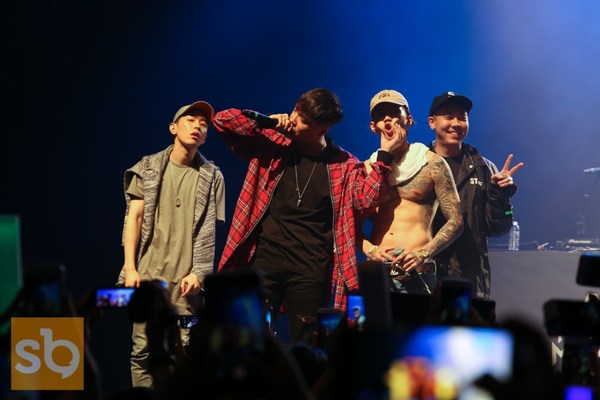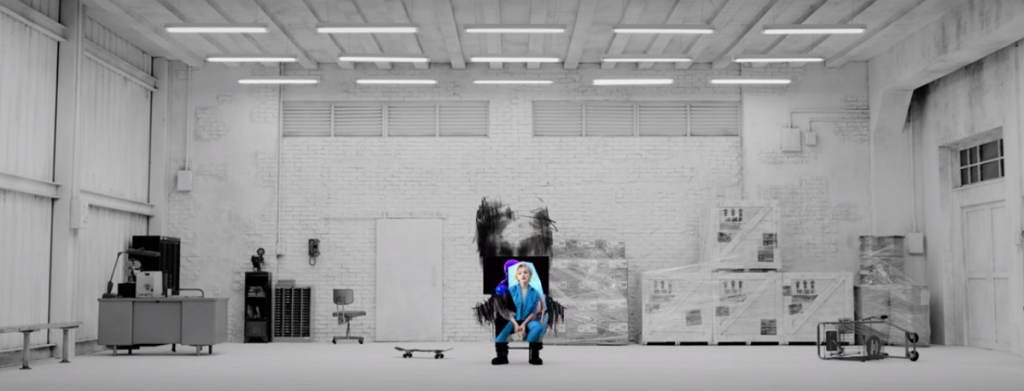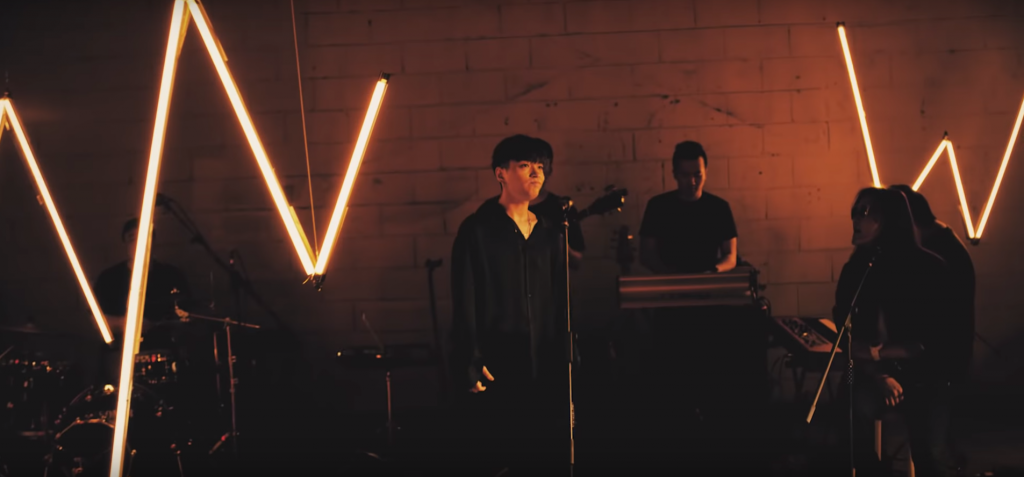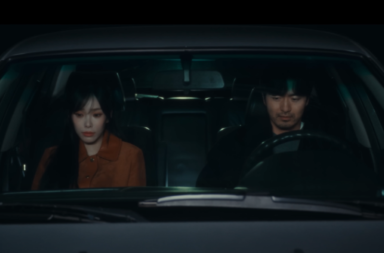
By 2010, the foundations of the Korean hip hop (KHH) landscape had already been paved with excellent hip-hop records, coming just the year before in the shape of Drunken Tiger’s Feel gHood Muzik. This record would go on to win Record of the Year at the 2010 Seoul Music Awards and Best Hip Hop Album of the Year at the 2010 Korean Music Awards. Noticeably, the album featured American hip hop artists such as Rakim and Rakaa Iriscience, while also having Korean and English versions.
Meanwhile, Epik High’s Map of The Soul was also released in 2009 and similarly catered towards international audiences. With these releases, alongside numerous brilliant records in the previous decade (Dynamic Duo’s Taxi Driver comes to mind), the KHH scene would evolve into one of the healthiest and most sustainable musical landscapes within Korea.
The Early Stirrings: Hip Hop Record Labels and the Media Industry
While K-pop (another genre that owed its origins to KHH) propelled the Korean wave, the KHH scene began to take shape in the hands of its artists. The first chapter was the creation of record labels run by KHH artists for artists in the KHH community. The biggest of these labels were as follows: Illionaire Records lead by The Quiett and Dok2, AOMG as headed by Jay Park and Simon Dominic, Hi-Lite Records run solely by Paloalto, and Just Music founded by Swings.
This establishment of an artist based environment ran in stark contrast to the K-Pop industry. The K-pop industry would within the decade become infamous for its slave contracts and mistreatment of its idols, ultimately leading to many legal disputes and in some cases disbandments of popular groups. The KHH landscape, however, would organically encourage the development of numerous talented creatives.
With these labels in place, KHH was ready to receive its new generation of artists. Mainstream media outlets also began to take notice of these early stirrings within the KHH sphere, birthing hip hop orientated shows like Show Me The Money. The first winner of the show, Loco, signed to AOMG and the success of the show led to the establishment of a productive relationship between broadcasting stations and record labels. TV programmes leveraged on the promise of contract offers, paving the way for an explosion of shows aiming at different demographics.
Unpretty Rapstar would be a female-only hip hop survival competition, while High School Rapper opened doors for high schoolers looking to begin their music careers early. R&B artists pushed through on shows such as Breakers, whereas producers gained notice on shows such as Hyena on the Keyboard.
This symbiotic relationship meant that contestants found fame and work through the shows, even if they did not end up winning on a specific show. Heize, for example, has become one of KHH’s leading female voices despite losing on Unpretty Rapstar.
Heize can be considered more of an R&B artist, but the connection between hip hop and R&B meant her success brought attention to both fields. The same can be said for producers. These three types of artists (hip hop artist, R&B artist, and producer) were what record labels searched for, and so shows were tailored to bring these artists to the attention of the labels and the public at large.
Rising Popularity and a Growing International Market
With this combination of increased public interest through TV programmes and nurturing record labels. The artists within KHH doubled and tripled by the year both in number and quality of music being produced. Each year, the bar seemingly went up and newer artists were discovered thanks to the visibility offered through shows.
This increase in quality drew the attention of a foreign audience, allowing KHH to propel the Korean Wave alongside K-pop artists. While instability permeated the K-pop industry with various disbandments and legal disputes, KHH began to organically connect with foreign contemporaries. AOMG label head Jay Park signed to Roc Nation, while producers such as Code Kunst, GroovyRoom, and Millic began to produce music for hip hop artists across the world, most notably in America.
Producers have also become the biggest key of this new landscape. They take prominence because they have created some of the most intricate albums of the decade, being responsible for stunning singles that produced perfect all-kills (PAK). Even when made on TV shows and charted in foreign countries much like their K-pop cousins, these tracks take the centre stage for their artistry. The brightest example of this would be found with Code Kunst’s Muggles Mansion released in 2017.
Code Kunst expressed, “I wanted to tell common stories with sources that reflect myself, yet include sounds that aren’t so common, so familiar.”
Muggles Mansion is woven by street spirit instrumentation, and every track on the album feels alive and bustling, moving with the ebb and flow of each note. Its textures paint a city landscape gone kaleidoscope, allowing each featuring artist to get lost within its syncopations. The interludes make sure that the album flows as uninterrupted as a river running through its city.
The album is densely populated with some of the biggest artists to emerge from the KHH landscape within the past decade. This record is a celebration of the genre while also showing all it has to offer. From the quietly brilliant yet always lost C Jamm dazzling on “THIS IS,” to Colde carrying the track “White AnciEty (Outro)” off into the clouds with his sleepy falsetto, Muggles Mansion is the KHH’s ethos all wrapped up into one album.
Other notable producer records across the decade include:
- 2xxx!, Life
- Millic, Vida
- Woogie, Rewind My Tape (1&2)
- GroovyRoom and Leellamarz, Room Service
- dress and Sogumm, Not My Fault
- Vinxen and Boycold, Boycold 2
Sub-labels, Crews, and Greater Opportunities
With this excellent array of producers crafting within the KHH landscape, things began to sprawl in unexpected ways. Record labels started creating sub-labels, with examples including H1ghr Music as a sub-label of AOMG and Ambition Musik as a sub-label of Illionaire Records. Jay Park stated, “[N]ow that AOMG has cemented its place in the scene, and all of AOMG’s artists are actively growing, I wanted to help provide opportunities for new artists.” He further explained that H1ghr Music would be a global label, situated between Seoul and Seattle.
Similarly, Illionaire Record’s The Quiett stated that Ambition Musik was an idea he came up with while filming Show Me the Money 5. He shared that it was a pity when Keem Hyo-Eun was eliminated and how a separate label offered more liberty beyond the existing team of Illionaire Records. This again is a huge departure from the K-Pop industry and its break-even system imposed on idols, where idols are often thought of as trapped into debt by their companies. The hip hop scene is willing to create entirely new sub-labels in service of artistic freedom.
To be fair, it was not just the hip hop CEOs that were sprawling outwards. Many artists formed their own hip hop collectives, the biggest of which are Fanxy Child (Zico, Dean, Crush, Penomeco, Millic and Stay Tuned) and VV:D (pronounced as VIVID; Zion.T, Gray, Loco, ELO and Crush). These collectives serve as supergroups and creativity support groups, pushing artists into becoming key members of the KHH sphere.
Dean, who seemingly fits in every one of these categories, has perfected the art of crossing over. Having released his first EP with UMG, an American global music corporation, he then signed with you will knovv, a label seemingly composed of a group of underground artists. Dean is also a part of two collectives (Fanxy Child & Club Eskimo). He has collaborated with the biggest artists in both Korea and America, quietly becoming the most talked about Korean R&B singer of the decade with only one EP and a handful of stunning singles.
Dean’s debut EP 130 Mood: TRBL was created from back to front, starting where it once ended with an outro. A stringing together of R&B soul masquerading as what was then modern music conventions, the EP feels now a retrospective of his sound.
130 Mood: TRBL stitches together ideals and textures, the title deriving from many different pieces. 130 is a reference to the name of James Dean’s car, Dean derived his artist name from James Dean, and TRBL is a shortening of the word trouble, a nickname Dean gave to himself and the underlining Mood of the record. It becomes clear that Dean is very much a vignette artist, combining pieces of emotion caught in time. His recent singles, “Instagram” and “Dayfly,” builds on this style tenfold. “Instagram”’s black and white texture swirls around the emotions of alienation and disconnection in a time of social media syndrome. “Dayfly” plays with the duplicating metaphors of being caught in a patterned routine of one-night stands and loneliness.
Dean’s upcoming release apparently titled 130 Mood: RVNG, is itself caught in a loop of absence, with Dean loosely stating it would be released in 2018. However, as 2019 slowly comes to an end, its release will likely roll into the next decade as the most anticipated R&B production in KHH.

Other notable R&B releases across the last decade include:
- Zion.T, OO and ZZZ
- OffonOff, Boy.
- Colde, Love Pt.1
- Elo, Gradation (Part 1-4)
- Taeyang, White Night
- Suran, Walkin
- Heize, Late Autumn
- Rad Museum, Scene
- Samuel Seo, Frameworks
- JCLEF, Flaw, Flaw
A New Era of Artistic Prominence and Independence
The musical landscape has since been teeming with these positive elements: a great foundation made in the decade before, record labels that advance with the needs of new artists. Public and global interest garnered by TV exposure and chart-topping singles, and artist components that organically weave between one another in a competitive yet community-based manner.
The KHH landscape is poised to push into the new decade as the most stable genre in the country. Aiming towards overtaking the K-pop industry’s popularity. It bears the potential of becoming the number one export of musical values in the Korean Wave. Hip hop itself, the core of its namesake genre, will and has been creating some of the most beautiful iterations of itself seen in the world.
Simon Dominic‘s Darkroom: Roommates Only feels the anthesis of KHH right now. An album that could only have been created due to the competitively rich decade it exists within. In the decade before, Simon Dominic was part of the famed duo Supreme Team, before leaving the duo and his label to start AOMG with Jay Park. He continued to release a PAK single, “Simon Dominic.” Subsequently, after three years of no new musical content, he released Darkroom: Roommates Only, and No Open Flames a year later.
Darkroom: Roommates Only is an epilogue of depression, a dancing with ones darkest thoughts, hidden in jazzy cloth and then given to the masses. It picks at the listener’s deepest thoughts and greatest weaknesses. The result is Simon Dominic as nobody had seen him, a removing of the curtain between an artist and the projection of himself that the world sees on a stage. While only being 30 minutes long, the record itself stands as an enormous symbol of what KHH has to offer.
Other notable hip-hop releases across the last decade include:
- DPR Live, Coming to You Live
- Nucksal, The God of Small Things
- Woo, AF
- BewhY, The Blind Star
- Epik High, Sleepless in _________
- JJANGYOU, KOKI7
- Zico, Television
- Beenzino, 12
- Ash Island, ASH
Simon Dominic’s artistic trajectory stands as a golden example of all that has occurred in the KHH community this decade. Interestingly enough, the decade has reached an intriguing close. By 2019, AOMG started Signhere, the first hip hop competition created by and for a sole record label, the winner instantly signing to AOMG. Signhere cuts out the middle man of TV programming, a stakeholder which in many ways had been crucial in spotlighting KHH at the rise of its popularity, and a decade comes full circle with such a breakaway.

(Hiphopplaya, Seoul Music Awards, Vox, BBC, Variety, Yonhap, Roc Nation, Twitter, Instagram, YouTube (1)(2)(3)(4)(5)(6)(7)(8)(9)(10)(11)(12)(13)(14)(15)(16)(17)(18)(19). Images via AOMG Entertainment, Joombas Co Ltd, Universal)


